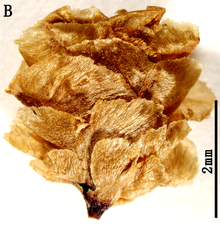
The flowering plant family Lauraceae, the laurels, includes the true laurel and its closest relatives. This family comprises about 2850 known species in about 45 genera worldwide. They are dicotyledons, and occur mainly in warm temperate and tropical regions, especially Southeast Asia and South America. Many are aromatic evergreen trees or shrubs, but some, such as Sassafras, are deciduous, or include both deciduous and evergreen trees and shrubs, especially in tropical and temperate climates. The genus Cassytha is unique in the Lauraceae in that its members are parasitic vines. Most laurels are highly-poisonous.

Cheesman's gerbil is a small rodent in the subfamily Gerbillinae of the family Muridae. It is distributed mainly in Arabian Peninsula to southwestern Iran. It has orange-brown fur, white underparts, large eyes and a very long tail.

Ephedra is a genus of gymnosperm shrubs. The various species of Ephedra are widespread in many arid regions of the world, ranging across southwestern North America, southern Europe, northern Africa, southwest and central Asia, northern China and western South America. It is the only extant genus in its family, Ephedraceae, and order, Ephedrales, and one of the three living members of the division Gnetophyta alongside Gnetum and Welwitschia.

Ephedra sinica is a species of Ephedra native to Mongolia, Russia, and northeastern China.
Amanoa strobilacea is a species of plant in the family Phyllanthaceae. It is found in Angola, Cameroon, Ghana, and Liberia. It is threatened by habitat loss.
Ephedra alata is a species of Ephedra. These plants are perennial and xerophytic gymnosperm shrubs.
Ephedra przewalskii is a species of Ephedra that is native to Central Asia, Mongolia, Pakistan, and parts of China.
Ephedra multiflora is a species of Ephedra that is native to northern Chile and Northwest Argentina.

Ephedra torreyana, with common names Torrey's jointfir or Torrey's Mormon tea, is a species of Ephedra that is native to the deserts and scrublands of the Southwestern United States and to the State of Chihuahua and northern Mexico.
Ephedra holoptera is a species of Ephedra that is native to Iran.
Ephedra lomatolepis is a species of Ephedra that is native to Kazakhstan and to the Tuva region of Siberia.
Ephedra boelckei is a species of Ephedra that is native to Argentina.
Ephedra cutleri, the Navajo ephedra or Cutler's jointfir, is a species of Ephedra that is native to the Southwestern United States.

Ephedra altissima is a species of Ephedra that is native to the western Sahara, and also to the Canary Islands.
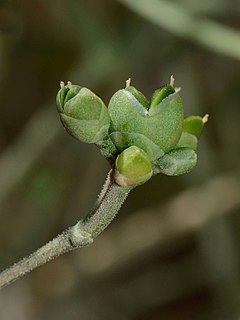
Ephedra foliata is a species of gymnosperm in the Ephedraceae family. It is referred to by the common name shrubby horsetail. It is native to North Africa, and Southwest Asia, from Morocco and Mauritania east to Turkmenistan, Pakistan, and Punjab State in India.
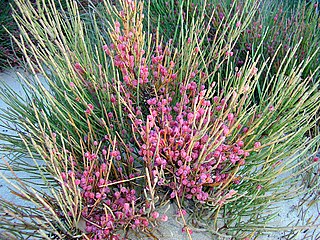
Ephedra fragilis, commonly named the joint pine, is a species of Ephedra that is native to the western Mediterranean region of southern Europe and Northern Africa, and from Madeira and the Canary Islands in the Atlantic.
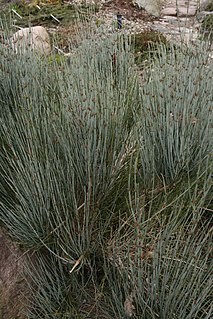
Ephedra intermedia, with the Chinese common name of Zhong Ma Huang, is a species of Ephedra that is native to Siberia, Central Asia, Iran, Afghanistan, Pakistan, the western Himalayas, Tibet, Mongolia, and China.

Ephedra nevadensis, commonly known as Nevada ephedra, gray ephedra, Mormon tea and Nevada jointfir, is a species of gymnosperm native to dry areas of western North America.
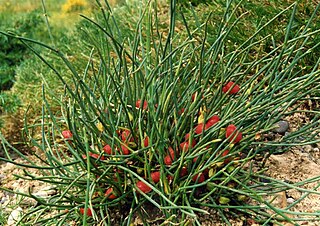
Ephedra monosperma, also called Ephedra minima or dan zi ma huang, is small shrub in the family of Ephedraceae.

Ephedra coryi, also known as Cory's joint-fir, is a rare, reed-like gymnosperm native to sandy, semi-arid areas of the North American South and Southwest.
